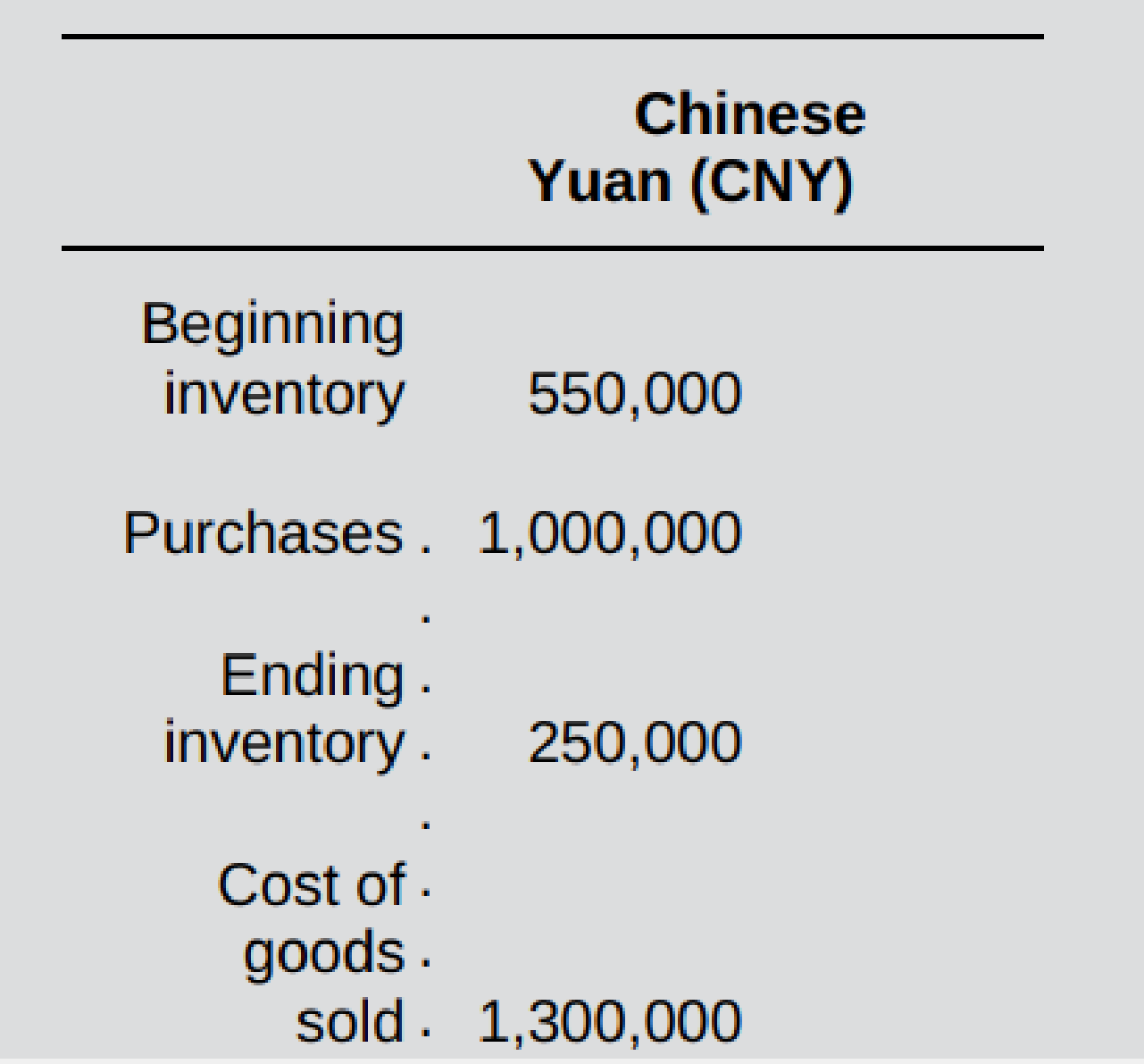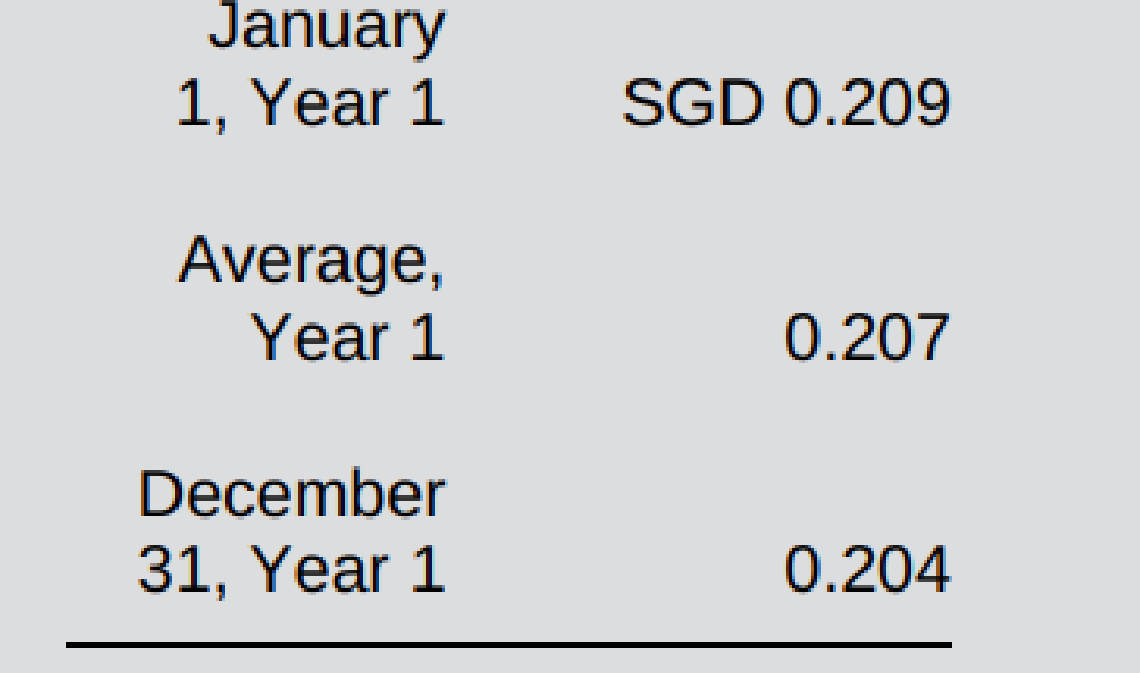
Connect Online Access for International Accounting
5th Edition
ISBN: 9781260248463
Author: Doupnik, Timothy
Publisher: Mcgraw-hill Higher Education (us)
expand_more
expand_more
format_list_bulleted
Textbook Question
Chapter 7, Problem 11EP
The Year 1 financial statements of the Chinese subsidiary of Singcom Limited (a Singapore-based company) revealed the following:

Singapore dollar (SGD) exchange rates for 1 CNY are as follows:

The beginning inventory was acquired in the last quarter of the previous year, when the exchange rate was SGD 0.210 = CNY 1; ending inventory was acquired in the last quarter of the current year, when the exchange rate was SGD 0.205 = CNY 1.
Required:
- a. Assuming that the current rate method is the appropriate method of translation, determine the amounts at which the Chinese subsidiary’s ending inventory and cost of goods sold should be included in Singcom’s Year 1 consolidated financial statements.
- b. Assuming that the temporal method is the appropriate method of translation, determine the amounts at which the Chinese subsidiary’s ending inventory and cost of goods sold should be included in Singcom’s Year 1 consolidated financial statements.
Expert Solution & Answer
Want to see the full answer?
Check out a sample textbook solution
Students have asked these similar questions
Financial accounting
Business 290 Work experience
May I please have a letter written to Ms. Swanson from Student Employment Services that I would like to make an appointment so that I can get assistance in finding an internship?
Thank you,
Please provide correct answer accounting
Chapter 7 Solutions
Connect Online Access for International Accounting
Ch. 7 - Prob. 1QCh. 7 - Prob. 2QCh. 7 - Prob. 3QCh. 7 - Prob. 4QCh. 7 - Prob. 5QCh. 7 - 6. What are the major differences between IFRS and...Ch. 7 - Prob. 7QCh. 7 - 8. Which translation method does U.S. GAAP require...Ch. 7 - Prob. 9QCh. 7 - 10. How are gains and losses on foreign currency...
Ch. 7 - Prob. 11QCh. 7 - Prob. 12QCh. 7 - Prob. 1EPCh. 7 - Prob. 2EPCh. 7 - Prob. 3EPCh. 7 - Prob. 4EPCh. 7 - 4. Which of the following best explains how a...Ch. 7 - In the translated financial statements, which...Ch. 7 - Prob. 7EPCh. 7 - Prob. 8EPCh. 7 - Prob. 9EPCh. 7 - Prob. 10EPCh. 7 - The Year 1 financial statements of the Chinese...Ch. 7 -
10. Simga Company's Turkish subsidiary repented...Ch. 7 - Prob. 13EPCh. 7 - Prob. 14EPCh. 7 - Prob. 15EPCh. 7 - Prob. 16EPCh. 7 - Prob. 17EPCh. 7 - Prob. 18EPCh. 7 - 16. Access the most recent annual report for a...Ch. 7 - Prob. 21EPCh. 7 - Prob. 22EPCh. 7 - Prob. 1CCh. 7 - Prob. 2C
Knowledge Booster
Learn more about
Need a deep-dive on the concept behind this application? Look no further. Learn more about this topic, accounting and related others by exploring similar questions and additional content below.Similar questions
- answer isarrow_forwardWhat role should the precautionary principle play in the development and application A of accounting standards? Discuss the potential tensions that may arise between the need for financial transparency and the desire to mitigate against excessive risk- taking or overly optimistic reporting.arrow_forwardAccounting 45arrow_forward
arrow_back_ios
SEE MORE QUESTIONS
arrow_forward_ios
Recommended textbooks for you

The Exchange Rate and the Foreign Exchange Market [AP Macroeconomics Explained]; Author: Heimler's History;https://www.youtube.com/watch?v=JsKLBpy6cEc;License: Standard Youtube License